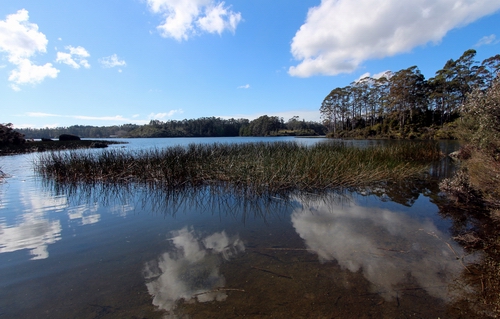Irrigation study could help make ‘massive difference’ in North
2 Sep 2016, 12:00 PM
Drought has cost Northland dearly in recent years, but a new study shows more than 90,000 hectares of it could potentially be irrigated offering greater protection from dry weather and contributing millions to the local economy.
In 2014 – spurred by severe droughts in 2010, 2011 and 2013 – the Northland Regional Council and Ministry for Primary Industries (through its Irrigation Acceleration Fund) contributed $75,000 each for the ‘Northland Strategic Irrigation Infrastructure Study’.
The study found that an additional 92,000 hectares of Northland’s land could potentially be irrigated, which would make a significant contribution to its regional economy.
Regional council economist Darryl Jones says if all 92,000ha was irrigated, it could contribute up to $247 million annually to GDP and employ the equivalent of 3400 people fulltime.
“This would equate to a four percent lift in GDP and six percent in regional employment.”
Mr Jones says while about 10,600ha of Northland is currently consented for irrigation, only about 8500ha is actually irrigated, most of it for horticultural use rather than livestock production.
At the, moment, Northland is home to just two 1980s-built irrigation schemes – one operating at capacity in Kerikeri and the other in Maungatapere, near Whangarei – both of which made significant contributions to their local economy.
 Lake Manuwai was formed in the 1980s to hold water for the Kerikeri Irrigation Scheme, which is currently operating to capacity servicing the area's horticultural industry.
Lake Manuwai was formed in the 1980s to hold water for the Kerikeri Irrigation Scheme, which is currently operating to capacity servicing the area's horticultural industry.
However, the demand for lifestyle and residential blocks made it increasingly difficult to secure the land needed to further develop existing and/or build new large-scale irrigation schemes.
Mr Jones says the scoping study had looked into the main supply and demand estimates for 18 areas across Northland which collectively already contained almost 90% of the 10,600ha consented for irrigation.
Based on a wide variety of criteria, the study urged further detailed work focussing on two important ‘clusters’ – one containing the Kaikohe, Kerikeri and Waimate North areas and the other North Kaipara and Ruawai.
Another important conclusion was that other uses, such as public drinking supply and industrial demand, could be key to making a community based water storage scheme economically viable.
He says given the importance of the work, the regional council had recently agreed to provide up to $165,000 for further study, with a matching contribution from the government via Crown Irrigation Investment Limited.
The main thrust of the latest work – due for completion about April next year – will be to gather the evidence to assess the commercial viability of community irrigation schemes in the Mid-North and Kaipara clusters.
“The study will look in greater detail at the demand and supply viability of a community water storage facility, and the likely commercial viability of storage options.”
Another part of the study will look at likely environmental and societal impacts of water storage and expanded irrigation and the work will also consider options as to what a suitable development entity could look like.
Mr Jones says even after the latest work is completed next year, much more research and science will still be necessary.
“This research will definitely need to stack up if Northland is to invest the many millions of dollars required to irrigate in a much more planned, strategic manner.”
If Northland could eventually position itself to maximise the economic, employment and environmental opportunities offered by improved irrigation, it should make a “massive difference” to the region’s future fortunes.
He says regional economic development agency Northland Inc had recognised this and had developed an initial proposition for the 2014 study. Northland Inc had also ensured the work had been listed as a key project in the Tai Tokerau Northland Economic Action Plan.
